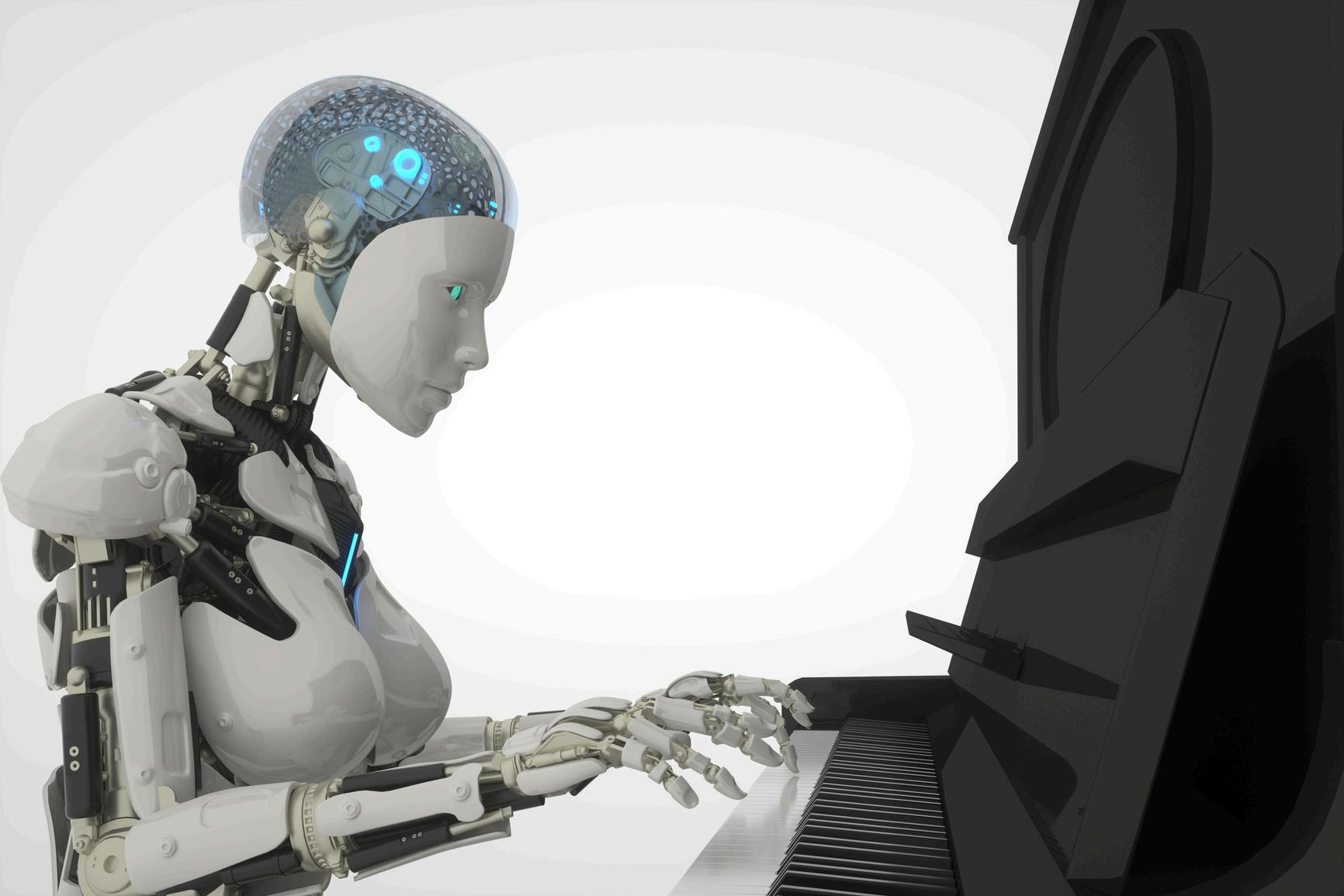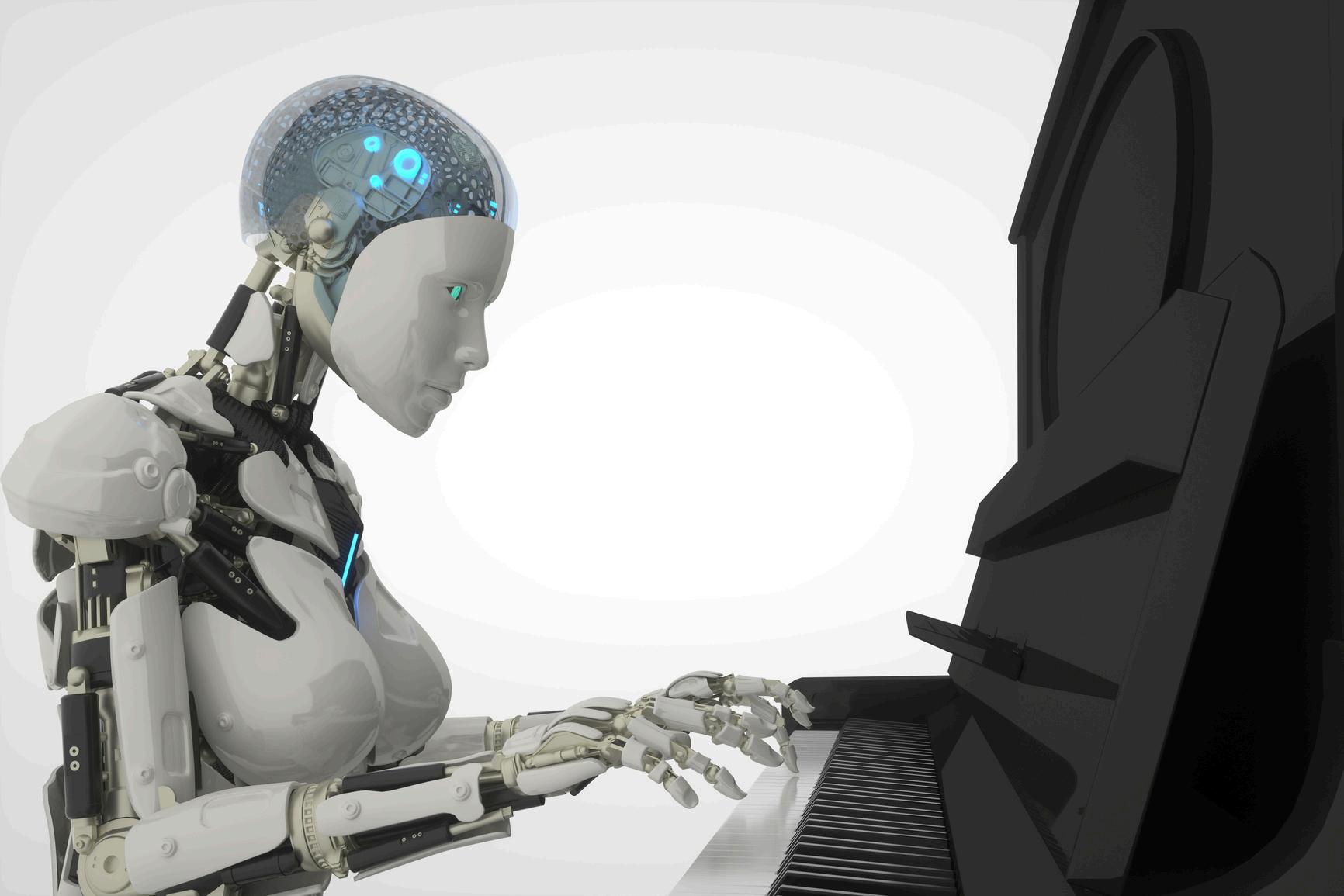
5 minute read
Hitting the AI notes
Dr Liz Stafford explores the benefits and disadvantages of AI in music teaching, with a little help from everybody’s favourite robot
Discussions about the impact of AI are making waves across every sector at the moment, and education is no exception. Many governments are pinning their hopes on AI being the tool that both finally solves teacher workload crisis and stablises school budgets, but there is currently resistance and sceptisism from schools, teachers, and parents to a vision of the future where AI plays a central role in our education system.
As a ‘creator’ of content, I have my own conflicted views about AI. I see the potential but also the risks to creatives and creators as more tools are released which can replicate our work. As an educator I also worry about the lack of human touch and care in AI, the potential for misinformation and bias (particularly against women, as highlighted in Laura Bates’ excellent book The New Age of Sexism), and also the effect on reflective practice and teacher skill set if these tools are used to ‘do the thinking for us.’ On the other hand, I already use many AI tools to save myself time for administrative tasks of the sort that take up far too much of busy teachers’ time.
Faced with a quandary within my own thinking about AI, I needed some more input to prepare for this article. So I turned, inevitably, to Chat GPT.
What follows is AI’s thoughts on how AI can support or hinder music teaching. Hold my hand as we step inside the Matrix...

In today’s ever-evolving educational landscape, artificial intelligence (AI) is making inroads into classrooms across the globe — and music teaching is no exception. For primary school teachers, many of whom are not music specialists, AI tools promise to support and simplify the delivery of music education.
Benefits of AI in Music Education:
One of the most significant advantages AI offers is support for teachers who may lack formal musical training. With AI-powered lesson planning tools, composition apps, and virtual instruments, generalist teachers can confidently deliver engaging and structured music lessons.
AI can tailor musical experiences to suit the needs of individual pupils. For example, apps that adjust the difficulty of rhythm or pitch exercises in real-time help ensure every child remains both challenged and encouraged — particularly valuable in classrooms with mixed ability levels.
Young children are naturally drawn to technology, and AI-powered music tools can captivate them in ways traditional methods may not. From interactive composing platforms to rhythm games with real-time feedback, these tools can boost enthusiasm and deepen musical understanding.
AI tools can offer real-time assessments, track pupil progress, and even provide automated feedback. This helps teachers manage large or lively classes more effectively, freeing up time to focus on creativity and classroom interaction.
Disadvantages and Cautions
While AI can replicate sounds and generate compositions, it cannot replicate the emotional nuance and creative spontaneity that lie at the heart of music. There is a danger that overreliance on technology might limit children's opportunities to express themselves through live performance, improvisation, and human interaction.
Not all schools have equal access to devices, high-speed internet, or funds for premium AI software. This digital divide can exacerbate inequalities in music education, leaving some pupils with fewer opportunities to explore music creatively.
AI-generated music content can sometimes lack cultural depth or nuance. Algorithms may favour Western classical norms or popular styles at the expense of global musical diversity. It’s important for teachers to be mindful of maintaining a rich and inclusive curriculum.
AI tools are most effective when used as part of a balanced approach. Teachers still need to guide interpretation, lead active listening, and cultivate collaborative performance. There is a risk that teachers unfamiliar with the technology may feel overwhelmed or overly reliant on digital solutions.
The best outcomes arise when AI is used to complement — not replace the teacher’s role. With thoughtful integration, AI can enhance music teaching by enriching learning experiences, building confidence among non-specialist teachers, and engaging pupils in new and exciting ways.
However, human creativity, emotional intelligence, and musical expression remain irreplaceable. For primary music education to truly flourish, AI should act as a helpful accompanist — not the conductor.

A couple of things struck me when reading through Chat GPT’s ‘thoughts’ on AI. One was that it presents a pretty balanced view, and a respect for human endeavour and the things that AI cannot replace. This gives me a comforting sense that our digital overlords are not planning to overthrow us anytime soon! Or perhaps they’re just lulling us into a false sense of security...?
The final thing that struck me was that the ‘disadvantages’ that it listed were the same issues that we know exist in music education already: availability of resources, lack of cultural diversity, teacher confidence and skill. It strikes me that if these issues already exist, then application of AI is by its own admission likely to compound these, not address them. Do we run the risk of creating a future where music teaching becomes less equitable and more variable in quality, but we don’t notice because we are blithely following the machine’s instructions?







